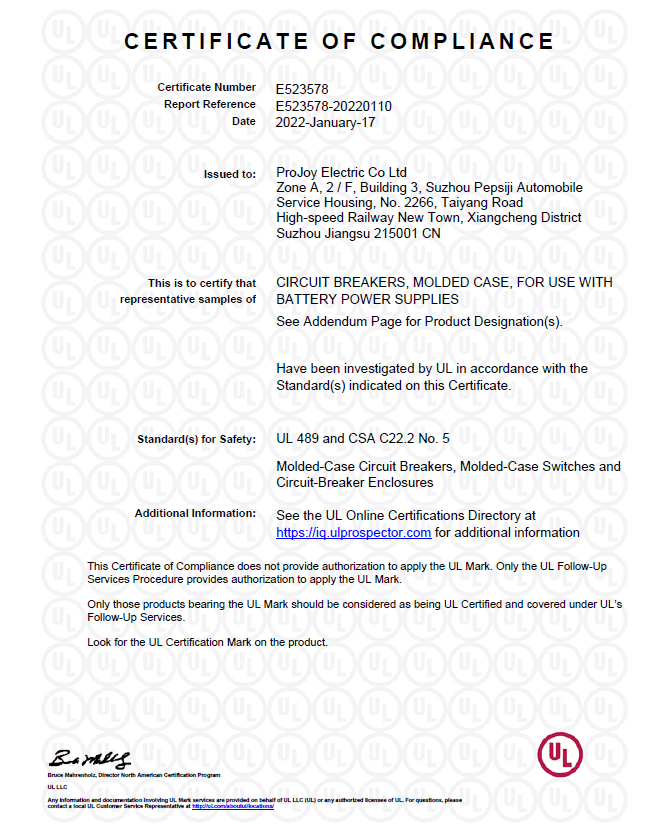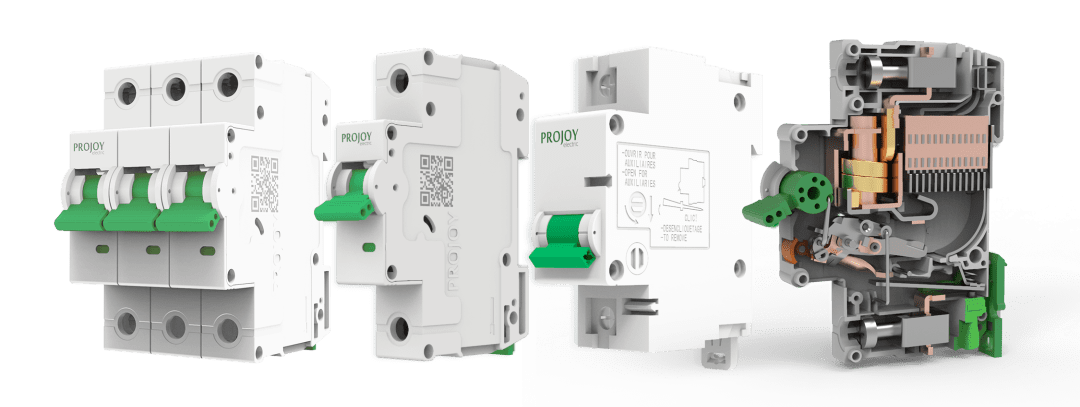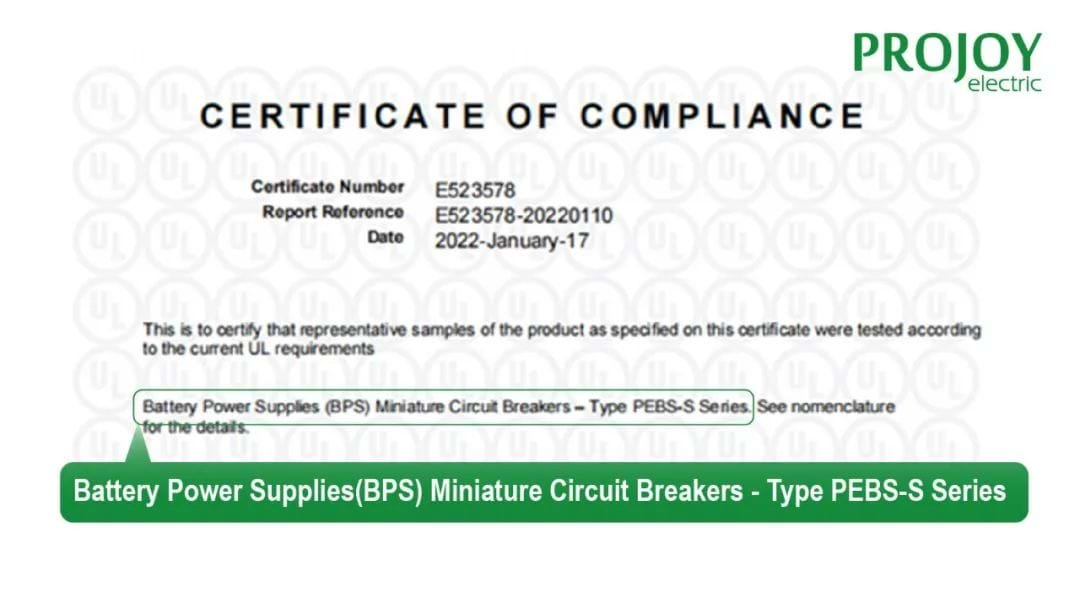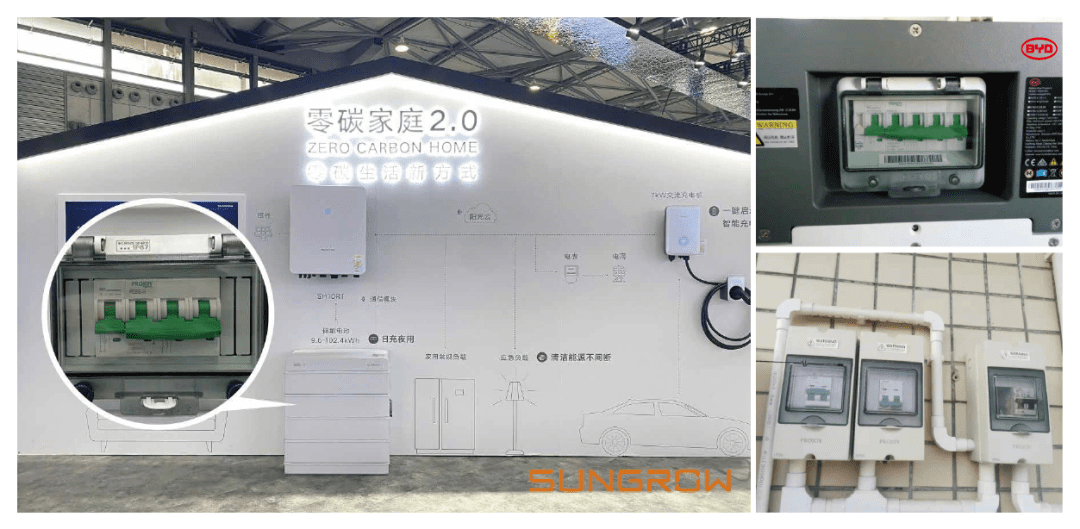Interpretation of UL Standard Differences of DC Miniature Circuit Breakers In Solar Storage System Selection
Date: 2022-05-27MCB (Miniature Circuit Breaker) is the most common switch in the control loop. It mainly has two functions, on-off circuit and protection circuit (overcurrent or short-circuit tripping) .
DC MCB (DC Miniature Circuit Breaker) is a special category of miniature circuit breakers, which adopts a special arc extinguishing and current limiting system, and can quickly break the fault current of the DC power distribution system, protect the automatic device from overload, short circuit and other fault hazards, to ensure the safety of the entire power system.

At present, there are some solutions on the market to replace DC miniature circuit breakers with AC miniature circuit breakers, especially in the selection of 0~160Vdc low-voltage solutions, this solution is not desirable. Although the AC micro-off voltage low on-off has no major impact, because there is no direct arc extinguishing. Once applied in the DC system, its life will be greatly reduced and bringing risks.
Well, as one of the most important components in the optical storage DC system. In the selection of the model, we can’t replace DC miniature circuit breakers with AC miniature circuit breakers. Not only we consider the conventional rated current, voltage factors but also what kind of UL certification should we refer to?
What is UL489 and UL1077?
At present, there are two categories of UL certification related to miniature circuit breakers: UL489 and UL1077.
UL489
Under the UL standard, low-pressure air circuit breakers, molded case circuit breakers and miniature circuit breakers are evaluated to be "listed" as UL489 for use as stand-alone products.

UL1077
Compared to UL489 which can be used as a stand-alone product, UL 1077 refers to a supplementary protector used in electrical equipment. These supplementary protectors have been evaluated to be "listed" as UL 1077.
In simple terms, if you need to choose a circuit breaker for protecting the overcurrent in the power loop, you must choose the UL489 circuit breaker.
And if it is an auxiliary overcurrent protection device in the control loop, UL1077 circuit breaker can be selected. In other words, UL1077 equipment is not considered a circuit breaker by UL, but is defined as a supplemental protector.
What is the difference between the specific certification terms? In addition, what is the difference between UL489B and UL489?
Comparison of UL1077, UL489 and UL489B
The standard name of UL1077 is "Supplemental Protectors for Use in Electrical Equipment"
●UL489 is "Molded Case Circuit Breakers, Molded-Case Switches and Circuit-Breaker Enclosures"
●UL489B is actually a derivative standard for photovoltaic systems based on UL489, and the name of the standard is " Molded-Case Circuit Breakers, Molded Case Switches, and Circuit-Breaker Enclosures for Use with Photovoltaic (PV) Systems"
●UL489 can be used in distribution arterial systems.
UL489B is suitable for photovoltaic systems.
UL1077 is mainly suitable for circuit terminals or branches, not for photovoltaic and important trunk distribution systems.
By comparison, the UL489 and UL1077 standard tests are similar.However, the UL489 test is more stringent, the safety requirements are higher, and the indicators are almost 3 times that of UL1077. Meanwhile, unlike the UL 489, UL 1077 circuit protection devices do not necessarily need to pass the test.
| Main parameters | UL107 | UL489 | UL489B |
Standard name | Supplemental protectors used in electrical equipment | Molded-Case Circuit Breakers, Molded-Case Switches, and Circuit-Breaker Enclosures | Molded-Case Circuit Breakers, Molded-Case Switches, and Circuit-Breaker Enclosures for photovoltaic (PV) systems |
Application | Circuit terminals or branches, household and similar environments | Distribution circuits or trunk roads, industrial site environments | Photovoltaic-specific, (PV) power supply system with a voltage of less than 1500V |
Clearance (when component voltage < 300V) | Between terminals of different poles: 6.4mm | Between terminals of different poles: 19.1mm | Between terminals of different poles: 19.1mm |
Creepage distance (when component voltage < 300V) | Between terminals of different poles: 9.5mm | Between terminals of different poles: 31.8mm | Between terminals of different poles: 31.8mm |
Electrical life requirements | 6000 times loaded, Cycle frequency 6 times/min | 6000 times loaded, 4000 times unloaded, Cycle frequency 6 times/min | 1000 times loaded, 1000 times unloaded, Cycle frequency 6 times/min |
Points for attention in the selection of circuit breakers for solar storage systems
Follow the UL489 or UL489B
Through the above introduction, we firstly understand whether we choose protection equipment for the power circuit, or auxiliary devices (supplementary protection equipment) for the control circuit when select the optical storage system?
At the same time, in general, a UL489 circuit breaker can protect multiple devices at the same time. However, UL1077 auxiliary protectors can only protect one device or protect a branch circuit.
UL489 circuit breakers can replace UL1077 supplementary protection devices but UL1077 cannot replace UL489 circuit breakers.

Non-polarized circuit breaker, safer and more convenient in application
At present, the DC miniature circuit breakers on the market are mainly divided into two types: Polarity and Non-Polarity.
Generally, the one marked (+-) on the miniature circuit breaker is a polarized circuit breaker. At present, the vast majority of DC circuit breakers on the market are also polarized, and their cost is lower. Special attention should be paid to the application. If there is a wrong connection of the polarity DC miniature circuit breaker, it will not be able to cut off the current and extinguish the arc in the event of overload or short circuit, resulting in immeasurable losses.
Non-polar DC miniature circuit breaker without any (+-) marking , which play a safety protection role regardless of the current flow. Especially in the current energy storage market, the direction of current in power energy storage is often bidirectional, and there are both charging and discharging modes, so non-polar DC circuit breakers must be used.
PEBS-S DC circuit breaker, a new choice for energy storage system
Following the successful launch of TUV 1000V 63A, the PEBS series DC miniature circuit breakers have been massively applied in the field of solar storage. Projoy has recently launched PEBS-S series non-polar DC miniature circuit breakers that meet UL standards and can be applied in the field of solar energy storage. Innovatively change the distance between the moving and static contacts, shorten the arc distance, and increase the arc ignition coil, so that the DC arc can smoothly enter the arc extinguishing chamber in any direction and cut off the arc. It is a DC miniature circuit breaker with arc extinguishing function. The model can be widely used in the application places that need to realize bidirectional charging and discharging current.

Projoy PEBS-S series high-voltage DC miniature circuit breakers, certified by UL489.At the same time, the appendix adds a circuit breaker test for battery power supply, the breaking capacity can reach 10kA, the maximum rated voltage can reach 1000VDC, and the rated current can reach 80A. It can be used in application scenarios such as energy storage grid-connected inverters, energy storage off-grid inverters, charging piles, and energy storage battery packs to provide interruption and protection for high-voltage DC circuits.
